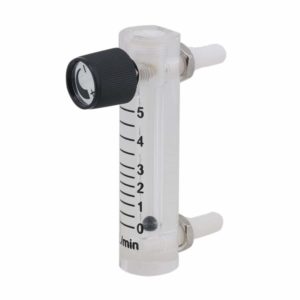
Oxygen Flow Meter [Assist with Wort Oxygenation]
CNBTR LZQ-3 Acylic Flowmeter Gas Acrylic Metal Fitting Oxygen Flow Meter 0-5 LPM
More InfoFrom the product description, check product page for current description, price and availability:
- Center distance: 65.5mm. Connection method: 8MM/0.31Inch (Hose Connection)
- Easy to use:It is simple to use, and has 8mm barbs for convenient connection to hoses
- Mainly used for detecting the oxygen flow, control oxygen flow and can be used in industry. Flowmeter Interface is connected by Thread Interface.
- Product function: to measure gas single-phase non-pulsating flow
Using a Flow Meter For Increased Repeatability
Most regulators that homebrewers use for oxygenating wort are simple setups – Example – via William’s Brewing. They attach to disposable oxygen tanks (typically sourced from a local hardware store) and are little more than on and off valves. No gauges, no pressure control (other than the degree to which you open and close the valve) and no flow control.
Time and rate give you an idea of how much oxygen you’re really adding to your wort. Time is easy to track. Rate, not so much, at least with typical homebrew O2 regulators. If you want more or less oxygen for your next batch, it’s mostly a guessing game.
Enter a flow meter. This particular model has a range of 0 to 5 LPM. This model also appears to have an knob that allows you to adjust the flow rate. Note: .6 MPa is about 87 PSI.
With both time and flow rate you can establish a more reliable baseline to work off of. This information should also help you to get better repeatability between brews.
Note that these are typically used for medical applications. I’m not sure what the barb size is. You will need to figure out tubing and connections to a compatible regulator and aeration/oxygenation stone.
CNBTR LZQ-3 Acylic Flowmeter Gas Acrylic Metal Fitting Oxygen Flow Meter 0-5 LPM – affiliate link, note that multiple variations of this product may be available, as such a different version may appear at this link
Make sure the components you use are compatible and rated for your intended application. Contact manufacturer with questions about suitability or a specific application. Always read and follow manufacturer directions.
More Fermentation Related!
This post contains affiliate links. We may make a commission when you use our Amazon links. This will never cost you extra. Thank you for supporting Homebrew Finds!
pinned amazon